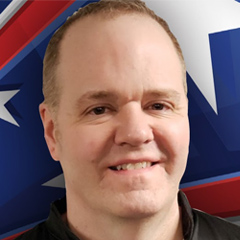
The Process of Resurfacing at the Pro Shop
Scott PohlWhat do you do when you throw a good shot but the ball doesn’t do what it’s supposed to? You could switch balls, or maybe the ball you just threw is overdue for a resurface at the pro shop. In this Premium Video, Scott Pohl, owner of On Track Pro Shop, explains what a resurface is and demonstrates the difference between a ball that needs one and the same one that just resurfaced.
What is resurfacing?
Resurfacing a bowling ball coverstock is taking that finish off of the coverstock and bringing it back to a new product. There are jagged edges in this cover stock, underneath the surface. Over time they smooth out, and with each throw down the lane, the edges get smoother and smoother, eventually resulting in the ball not hooking the way it used to.
The Process
Starting with a ball spinner in a sink, Pohl takes a 240-grit sanding pad to the ball. As it spins, he is continuously spraying water while hitting the ball with the sanding pad. If you were to do this process without adding water, you would chew through the coverstock very quickly.
You can see that this process is bringing those jagged edges back. This rough finish on the ball gets rid of a lot of the scratches and nicks that you develop over time. Next, he goes to the 360-grit doing the same process. It’s very important that we don’t just sand this dry.
From the 360-grit, you can typically jump to your desired finishing grit. In this situation, we’re going to finish it off at 1000. We want this to be a pretty aggressive reaction in the oil. We want to be able to see the ball motion pick up early, especially on a freshly oiled lane with heavy volume.
Originally, Haley started this bowling ball at 1000-Grit. Shot after shot, the ball keeps smoothing out. That surface keeps getting smoother and smoother. And after a while, it gets to about 4000 to 5000 grit. That’s why she missed the headpin, leaving the 1 to 8.
The shot on the lane here with the new refinished bowling ball started hooking a lot sooner, went through the pins, and got a strike. It hooked about four or five boards more, just refinishing the bowling ball.
Look at resurfacing your bowling balls around 50 to 75 games for the ones that are very dull. They wear out a little bit quicker, absorbing oil faster. With shinier coverstocks, you can get closer to 75 to 100 games.